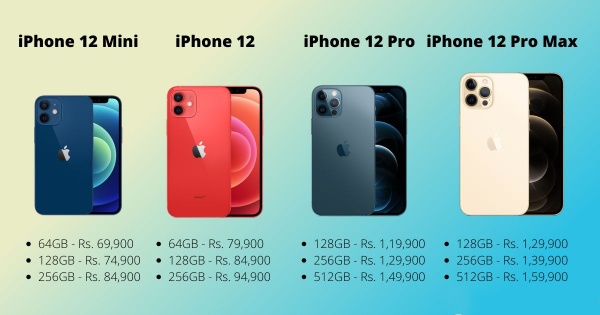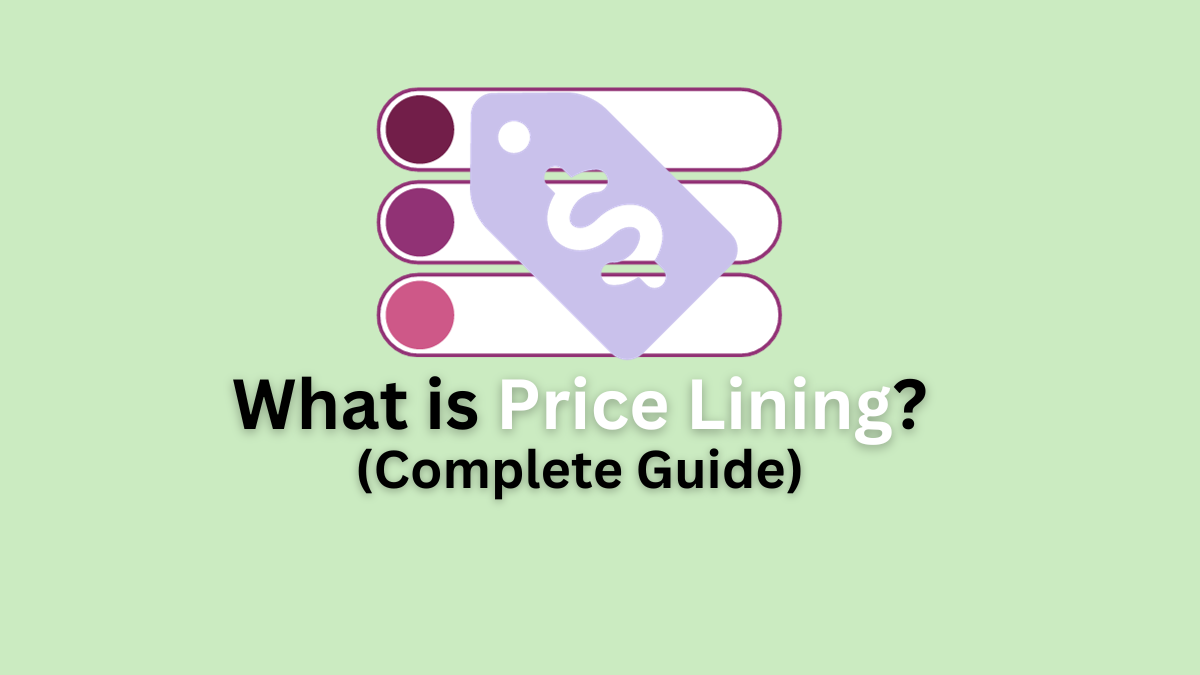What is Price Lining?
Price lining, a marketing tactic, classifies products based on their unique characteristics and quality levels. This strategy offers customers a range of pricing options for comparable items, with costs typically increasing as product quality improves.
It aims to boost a company’s sales by presenting various price points for similar products. The approach involves setting different prices for the same offerings, taking into account factors like quality, style, design, features, size, attributes, and benefits.
In essence, price lining groups similar products into distinct price categories, with prices typically starting low and gradually rising to reflect better quality or enhanced features. This strategy enhances consumer choice and can cater to both budget-conscious and quality-seeking buyers.
Objectives of Price Lining
The following are the five main objectives of price lining in marketing:
- Enhance consumer choice and cater to diverse budgets.
- Attract a wider range of customers.
- Simplify product selection with clear pricing categories.
- Communicate product value and quality effectively.
- Boost sales by offering options at various price points.
Advantages of Price Lining
Price lining offers various benefits to businesses – here are five to mention:
Expanded Choice
Price lining is like a menu with options for everyone. It offers products at different price points, so whether you’re on a tight budget or looking for premium quality, there’s something for you. It’s as if you walked into an ice cream parlor and found not only your favorite flavor but also choices for your friend who likes something lighter and your cousin who wants extra toppings. Price lining caters to various preferences.
Easy Shopping
Think of price lining as dividing products into clear sections. It makes shopping straightforward. You see the price, you know what you get, no surprises. It’s like shopping in a store with well-labeled aisles. You can go directly to the section that matches your budget and preferences, saving time and effort.
Read More: Sealed Bid Pricing in Marketing
Smart Marketing
Price lining is a bit like a traffic light system for shoppers. It guides them to what suits them best. It also makes advertising simpler – one message for each price line. Imagine driving on a road with clear signs telling you which lane to take for your destination. Price lining directs customers to the products that align with their needs.
Money Management
With price lining, you can budget better. If you know you can afford the ‘basic’ option, you won’t break the bank for the ‘premium’ one. It’s like having different sizes of ice cream – you pick what matches your appetite and wallet. Price lining helps you make informed spending decisions.
Sales Booster
For businesses, it’s a bit like offering small, medium, and large servings. It attracts more customers. When they have choices, they’re more likely to buy. It’s a win-win for both buyers and sellers. It’s similar to a restaurant offering a variety of portion sizes – everyone finds something to enjoy, and the restaurant sells more. Price lining increases sales and customer satisfaction.
Read More: Going Rate Pricing Strategy
Disadvantages of Price Lining
Price lining may also have some disadvantages that you should consider before implementing it:
Limited Customization
Price lining is like a pre-set menu where you can’t request special toppings. If you have unique needs or preferences, it might not cater to you. It’s as if you walked into a pizza place, and they only offer three fixed types of pizza. If you want something different, you’re out of luck. Price lining restricts customization.
Price Over Quality
Sometimes, the focus is on the tag rather than the true value. It’s akin to judging a book by its cover. Customers might choose a product solely based on its price point, overlooking its actual quality. Picture a library where books are only labeled by price, not genre or content. You might end up with a romance novel when you want a mystery thriller. Price lining can lead to hasty decisions.
Read More: Differential Pricing Strategy
Customer Confusion
Price lining can be like a maze with unclear signs. Customers might struggle to understand the differences between various options. It’s as if you entered a department store, and all the clothing had price tags, but no descriptions. You’d have a hard time figuring out what’s what. Price lining can leave buyers bewildered.
Loss of Premium Appeal
Offering too many options at different price points can dilute a brand’s premium image. It’s like a high-end restaurant suddenly serving fast food. The exclusivity vanishes. Customers may associate the brand with lower quality due to the budget-friendly options. Imagine if a luxury car brand started selling cheap, basic models. It might tarnish their reputation. Price lining can harm a brand’s prestige.
Comparative Pressure
When price lines exist, customers tend to compare prices more. It’s like a contest where everything is scored. This constant comparison can make customers more price-sensitive and less brand-loyal. It’s similar to being at a sports event where each player’s performance is constantly evaluated. Price lining encourages shoppers to hunt for the best deal, even if it means switching brands. This can lead to lower customer loyalty.
Read More: Value-Based Pricing – Definition
Strategies For Price Lining
Here are five main strategies you can use to implement price lining in your business:
Geographical Pricing
This strategy is like playing a game of “hide and seek” with prices across different places. Companies adjust their prices based on where you live. If you’re in a city, you might pay more, while folks in smaller towns pay less. It’s a bit like movie ticket prices – they’re not the same everywhere. Geographical pricing considers local factors like competition, cost of living, and customer preferences to set the right price.
Price Discounts and Allowances
Imagine a store with a “sale” sign in the window – that’s what this strategy is about. Companies offer price cuts or special deals to entice customers. It’s like getting a discount coupon for your favorite ice cream. Price discounts make you feel like you’re getting a bargain. Allowances are like bonus rewards, such as “buy one, get one free.” These tactics make you want to shop more.
Read More: Perceived Value Pricing
Promotional Pricing
This strategy is all about creating a buzz – like a celebrity launching a new album. Companies temporarily lower prices to attract attention and boost sales. It’s like a limited-time offer on your favorite gadgets. Promotional pricing can make you think, “I must buy it now, or I’ll miss out.” It’s like a flash sale – exciting, but it won’t last forever.
Discriminatory Pricing
This is like a secret code that unlocks different prices for different customers. Companies use info about you to set a unique price. It’s like getting a personalized discount based on your shopping history. If you’re a loyal customer, you might pay less, while newcomers pay more. Discriminatory pricing tailors the price to your specific habits and preferences.
Product Mix Pricing
Think of this like ordering a combo meal at a fast-food restaurant. Companies bundle products together and offer a single price for the whole package. It’s like buying a smartphone with a free case and headphones. Product mix pricing encourages you to get more value by purchasing the combo. You might not have bought the extras separately, but as part of the deal, it’s too good to pass up.
Read More: 4 Cs of Marketing: Customer, Cost, Convenience, and Communication
Examples of Price Lining
Price lining is a popular marketing strategy you can find its use in almost every sector. Here are the five to mention:
Smartphones
Imagine walking into a phone store and seeing a range of smartphones with different prices. That’s price lining at work. The basic model is like a no-frills car, while the top-of-the-line one is packed with all the bells and whistles, like a sports car. Each phone caters to different budgets and needs, so you can choose the one that fits your style and wallet.

Supermarket Cereals
When you stroll down the cereal aisle, you’ll notice a variety of choices. Price lining is at play here too. You’ve got the budget-friendly cereals in simple packaging – they’re like a quick, no-fuss breakfast. Then there are the mid-range ones with colorful boxes and added goodies, perfect for families. And finally, the premium cereals with fancy packaging and exotic ingredients for those looking to splurge on breakfast.
Read More: 3 Ps of Marketing Mix: Elements and Strategies To Use
Clothing Brands
Walk into a clothing store, and you’ll find price lining in action. There’s an affordable line of clothes for budget-conscious shoppers. Then, you’ll see mid-range brands offering trendy styles and quality. And, of course, there are high-end designer labels with premium fabrics and price tags to match. Price lining here ensures there’s something for everyone, no matter your fashion taste or spending power.
Fast Food Combos
The next time you visit a fast-food joint, take a look at their combo meals. It’s a classic example of product mix pricing, a part of price lining. You can order just a burger or fries if you’re not too hungry, or go for a combo with a burger, fries, and a drink. The combo gives you more for your money, making it a tempting choice.
Online Streaming Services
Streaming platforms often use price lining to cater to different viewers. They offer various subscription plans, ranging from basic to premium. The basic plan is like a one-screen ticket to your favorite show, perfect for solo viewers. Meanwhile, the premium plan offers multiple screens, ultra HD, and exclusive content, targeting those who want the ultimate streaming experience.
Read Next: The 4 Ps of Marketing Mix: Product, Price, Place, and Promotion
Arti Kushmi holds a BBS (Bachelor in Business Studies) degree and shares her business and marketing knowledge through this website. While not writing she will be reading and enjoying the moment.
